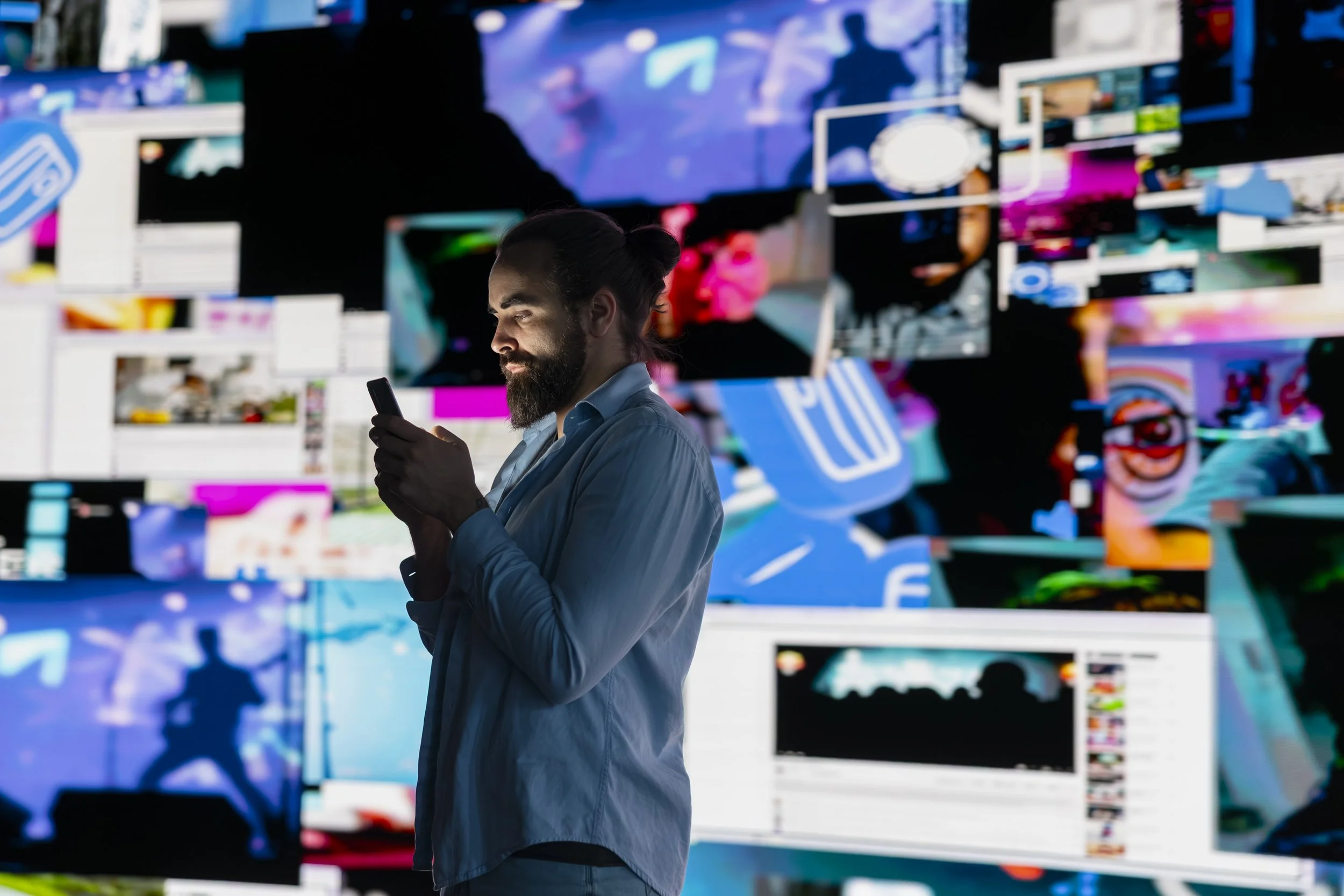Marketing Trends You Can’t Ignore in 2025
/If the last few years taught us anything, it's that marketing doesn’t wait for anyone. Trends shift, tech evolves, audiences demand more. For brands that want to lead—not follow—paying attention to what’s coming is essential. Here are the trends shaping 2025, what they really mean, and how you can lean into them without losing your voice.
1. AI Beyond the Gimmick: Personalization + Automation
AI is no longer the future—it’s now. What’s changed is how we use it. In 2025, AI isn’t just generating content or automating tasks; it’s getting embedded into the user journey. Real-time personalization (layout/content tailored by behavior), chatbots that are less robotic and more helpful, predictive analytics, and workflow automation are all now table stakes.
What this means for brands:
Don’t just use AI to crank volume. Use it to increase relevance. Use it to reduce friction. Use it to deliver experiences that feel like you know your audience—not that you’re just chasing eyeballs.
2. Omnichannel + Phygital Experiences
People expect brand experiences that transcend channel silos. The line between digital and physical is dissolving. Digital touchpoints, social commerce, AR/VR, pop-ups, interactive in-store moments — brands are leaning into experiences that blend the physical with the digital.
What this means for brands:
Think journey-first. Map the touchpoints. Where do people see you, interact with you, buy from you? How do you reinforce consistency and delight across all those moments? If your online presence is flawless but your in-person brand is rusty, you lose credibility.
3. Voice, Gesture & Accessibility Moves Center Stage
Interfaces that respond to voice or gestures, adaptive layouts, more inclusive design, and interfaces that adjust to context (time of day, lighting, user preference) are trending hard. The goal is to reduce friction and make digital feel instinctive.
What this means for brands:
It’s not enough for your site/app to look good. It has to feel intuitive. Accessibility isn’t just compliance. It’s trust. When people can use your product easily—regardless of ability, device, or environment—they stay longer, return more, and trust more.
4. Authenticity, Realness & Community Over Perfection
Audiences are burning out on perfection. Glossy visuals alone aren’t compelling if the message feels hollow. There’s a growing hunger for authenticity: real stories, human voices, relatable content, UGC, creator-driven content (especially micro- or nano-influencers).
What this means for brands:
Don’t hide behind polish. Let parts of the brand be raw. Let parts of the story be messy. Use creators who reflect your audience. Reuse real feedback and experiences. Authentic wins because people trust it.
5. First-Party Data, Privacy & Trust
With cookies dying, privacy regulations tightening, and consumers more skeptical, actual data ownership—consent-driven, transparent—is becoming all-important. Rely on first-party data sources: your email list, your own CRM, loyalty programs, gated content. And always with respect and transparency.
What this means for brands:
Pause and audit. Are you collecting data ethically? Are you using it to personalize, not to spam? Make pushing back on invasive tracking a competitive advantage. Because consumers notice when brands are sloppy with data.
6. UX/UI That Moves, Adapts, and Delights
UI/UX trends are evolving fast. Soft 3D effects (neumorphism, glassmorphism), adaptive themes (dark mode, ambient adjustments), micro-interactions, voice interfaces, and immersive visuals (AR/VR) are pushing design from static pages to experiences.
What this means for brands:
Design isn’t decoration. It’s one of the first places your promise gets tested. If your UI feels rigid, your UX is slow, or your visual identity doesn’t adapt, you risk losing people before they engage deeply. Good UX/UI equals less friction + more retention.
The Role of a Fractional CMO in Navigating These Trends
Here’s where Umlaut’s Fractional CMOs shine: they help brands see around the corner. Because trends aren’t useful if you chase all of them. They help you pick what aligns with your voice, stage, and audience. They build frameworks so that adopting trends doesn’t send you into chaos.
A fractional CMO doesn’t demand full budget or headcount. They assess: which trends are real opportunities vs. hype; which ones support your identity vs. dilute it; how to integrate tech, design, data in ways that move the needle now and future-proof.
Final Thoughts
2025 is where marketing becomes more human, more adaptive, more strategic. It’s not about having the flashiest tech — it’s about combining relevance, clarity, and trust with creativity. If you get that right, trends become accelerators, not distractions.
If you’re curious how to map these trends into your strategy without losing your identity, let’s talk. At Umlaut, we don’t just redesign websites; we build digital experiences that move brands forward. Connect with us on LinkedIn to learn more.


